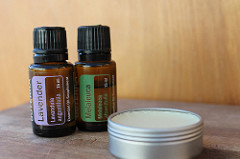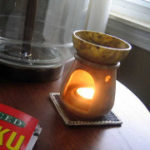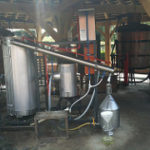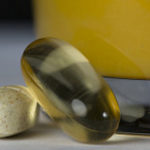With the news of potential pandemic influenza prevailing the airwaves, many folks are turning to natural medicines to support their immune system. There’s great interest in protecting one’s self and one’s family from Swine Flu, Avian Flu and the like. Although there has not been any large-scale trials on influenza-prevention using natural methods, there IS a good amount of data on the anti-viral and immunostimulant activity of essential oils. (For those of you not in-the-know, essential oils are the concentrated, carefully-extracted volatile chemical constituents of plants and plant materials). Interestingly, it’s been the position of many of the world’s foremost aroma-medicine practitioners that the most medically important use of essential oils is for the treatment and prevention of infectious illness. Here’s a review of the scientific data, some suggested antiviral recipes, and instructions to use these oils for yourself and your family.
The Supporting Data: Antiviral Actions of Essential Oils
Over the last decade, laboratory researchers around the world have found many essential oils are capable of directly eradicating viruses. Further, they may even prevent viruses from moving between cells within the body and limiting the spread of infection. This is not an over-optimistic interpretation of the data by an essential oil proponent, but the actual conclusions of controlled research studies. Abstracts of all the research mentioned here can be found through pubmed.gov, the database maintained by the National Institute of Health and the US National Library of Medicine. If you wish, you can browse these results by entering search terms such as “essential oil virus”, “antiviral essential oil”, and more specifically “laurus nobilis SARS” (Laurus nobilis being Bay Laurel essential oil, and SARS a highly-infectious viral respiratory ailment). While there is not yet data where essential oils have been tested against Swine Flu and Avian Flu specifically, as we’ll see there is every reason to believe the oils will be effective against these virus strains as well.
Interpreting the Data: Many Oils vs. Many Viruses
With more than one hundred published research papers on the subject, a summary is in order. What scientists are finding is that many of the essential oils commonly in use today have antiviral properties. Whether an oil is effective against a particular virus depends upon the natural chemical makeup of the oil and the structure of the virus being studied. The data, without a doubt, is very encouraging. One study perfomed in Germany this year concluded with the note that Tea Tree was able to “reduce viral infectivity by greater than 96 percent”. The same study went on to clarify that the whole, natural oil, rather than any single chemical synthetically extracted, was up to TEN TIMES more effective as an antiviral agent. The precise reason for this is not known — it is clear that some of the most chemically complex oils exhibit the greatest antiviral effects, and perhaps this mixture of nature’s chemicals attacks the virus AND supports immune function is several ways at once.
Laurus Nobilis and SARS
Because research is not yet available on the effects of oils against Swine and Avian influenza specifically, we need to make careful, logical conclusions from the data that IS available. For instance, the oil from Laurus nobilis (or Bay Laurel, the common cooking spice) was found to have antiviral action against the SARS-CoV virus — a highly contagious illness that made headlines as it spread around the world in 2003. A look at the aromatherapy literature notes that Bay Laurel has a highly complex makeup, containing molecules from nearly every one of the major classes of compounds found in essential oils. Hyssop is another oil also considered potently antiviral, again with a similar complex structure.
Paring Down The List: Highly Regarded Anti-Viral Oils
It is this sharing of natural compounds that supports the literature’s assertion that there are a great many oils in use today that are antiviral — one reason you’ll typically see several oils, not just one, in an antiviral formula. But which oils to use for your needs? This is where the long-time historical practice of aroma-medicine therapists helps us choose. The antiviral and immune-supportive essential oils have been categorized by the symptoms the infection produces. The Cineol-containing oils, like Eucalyptus and Ravensara are chosen where the bronchial system is affected. Melissa and Tea Tree are most commonly used for viruses infecting the skin — though their antiviral action for other parts of the body should not be ignored, because their synergistic effects with other oils creates a formula with a complex mixture of natural chemicals — similar in respect to the balance found in the single oil Bay Laurel. Other oils are highly regarded for their positive effect on the immune system overall: Frankincense is considered by some to be the most potent immunostimulant, and Melissa has this property as well.
A short list of essential oils that one can select from to support immunity against influenza infection includes the following: Melissa (having significant anti-HSV activity, it is also thought to be a potent immunostimulant — boosting the ability of our immune defense), Tea Tree (a very broad spectrum antiviral/antimicrobial), Rosalina (also known as Lavender Tea Tree, with a natural chemical profile containing constituents of both these oils), Lavender (commonly used as an anti-stress agent — which itself supports immune system function — and also having antiviral action), Bay Laurel (Laurel Leaf, reported effective against SARS-CoV), Ravensara aromatica, Eucalyptus Radiata (one of many Eucalyptus species, this one is most often noted as “antiviral”), Frankincense (considered by some the most effective immunostimulant oil available), Thyme, and Hyssop decumbens (a highly regarded antiviral, with a highly complex natural chemistry makeup).
A Balanced Formula To Make At Home
A blend can be made using the following oils (and this complete formula can then be adapted to different applications as we’ll see): 1 milliliter (ml) Melissa, 1/2ml Thyme, 2ml Lavender (use Lavendula angustifolia), 1 and 1/2 ml Ravensara aromatica, 2ml Eucalyptus Radiata, 1 and 1/2 ml Hyssop decumbens, 3 ml Maleleuca ericifolia and 3ml Laurus Nobilis (Bay Laurel). A simpler, yet still effective formula with a more gentle nature — and more appropriate for children: 4ml Lavender, 3ml Melaleuca ericifolia, 1ml Ravensara, 1ml Eucalyptus, and 3ml Bay Laurel. While having a medicinal purpose, these blends do really smell wonderful as well.
Diffusing Your Oils for Best Results
The best way to use these oils is through diffusion, which is essentially “rapid evaporation”. A nebulizing aromatherapy diffuser will make a fine mist of essential oil which cleanly evaporates in your surroundings. This method allows a low concentration of the oils to be inhaled regularly. The effect is to actually disinfect the air in your home, as well as getting the oils into one’s lungs and bloodstream in small amounts. A feature of oils’ activity is that they are reported to reduce the ability of viruses to penetrate cell walls, so the lungs and sinuses become protected just by breathing the oil-infused air. Be careful not to overdo it though — the aroma should never be overwhelming or irritating, and your body will tell you if you’ve had enough. The oils do their immune-supportive job in subtle ways, which require only the smallest amounts of oil. The casual inhalation of the oils also gets them into circulation throughout the bloodstream, penetrating all the organ systems, and most importantly the lymph system — home to our immune function. A cold air nebulizing diffuser (as oppposed to an ‘ultrasonic’, which dilutes the oils with water) would ideally be run 5-10 minutes every hour for this purpose.
Lymphs, Baths and Foot Rubs, Oh My!
In cases where diffusion is not practical, topical application of the oil formula is the next best thing. This can be done in a couple of ways: either though an aromatherapy bath, or through the ancient practice of reflexology — where the oils are absorbed at the reflex points of the feet. For the bath, mix 4-6 drops of the essential oil recipe in a little carrier oil (or any off-the-shelf bath oil). Swirl this blend into an already drawn bath and soak! For children, lessen the amount of essential oil 2 drops (for ages 2-8) or 4 drops (9-13). The feet and the areas of the body where the lymph nodes are close to the surface are also excellent places to massage in this recipe. The oils readily penetrate the skin and are rapidly absorbed. For adults, make a concentration of the essential oil recipe in any carrier oil (Coconut, with its own antiviral activity may be best — otherwise any one will do). A concentration is simply a 1 to 20 ratio — 1 part essential oil blend to 19 parts carrier (this same concentration is made by adding 44 drops of the formula to each 1 fluid ounce of carrier oil). Lower this concentration for children in a manner similar to the aromatherapy bath. A daily foot massage, and/or massage into the armpits, neck and sternum is an excellent means of treating yourself and your family to these wonderful herbal medicines.
Conclusion: Essential Oils, Infectious Illness and the Future
While we cannot be certain of the direct effects of essential oils for our needs, it appears to the lay practitioner that the evidence supporting their use is just and solid as for any other natural medicine choice. Recall that the world’s leading aromatherapists suggest that it is in the prevention and treatment of infectious illness that essential oils will find their place in our medical systems. Given the data that so many essential oils offer antiviral activity against a variety of viruses, it isn’t out of the realm of possibility that they will be effective as Swine flu prevention. And with their relative ease of use, and ready availability, there’s little reason not to see what they may have to offer for you and your family.
*Disclaimer: These statements have not been evaluated by the FDA. They are not intended to treat, cure or prevent any disease. The statements included in this document are the opinions of natural health professionals drawing on historical therapeutic practices and relevant scientific data. They are not meant to be a substitute for face-to-face consultations with trained and licensed medical professionals. Essential oils are considered to be supportive of the immune system’s actions my a great many health practitioners; at the same time, it is important to be aware of all the options available to you to make the best choices for your health and the health of your family.










Leave a reply